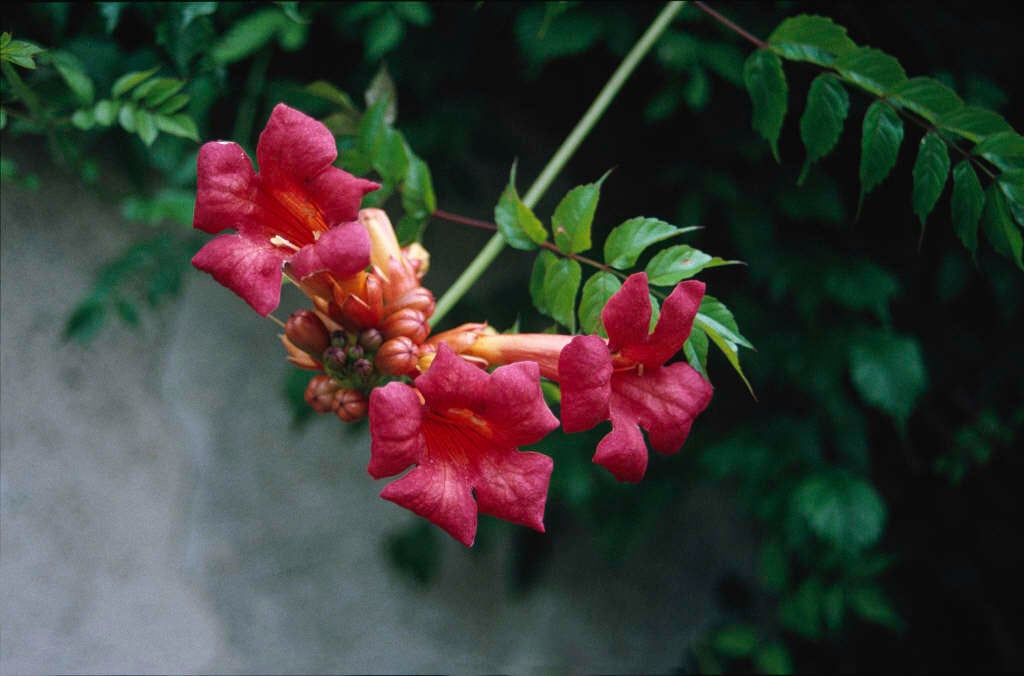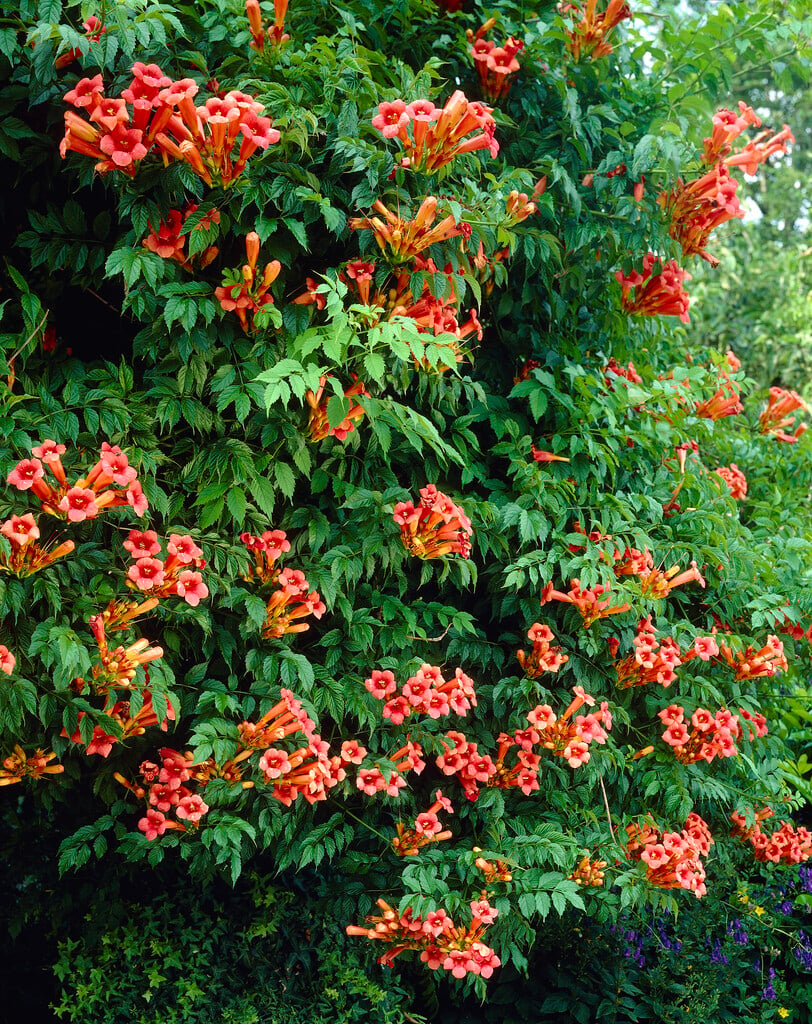Campsis radicans
trumpet vine
A vigorous self-clinging woody climber growing to 10m, with pinnate leaves and bright orange or red, trumpet-shaped flowers 8cm long, borne in clusters in late summer and autumn
Other common names
trumpet climbertrumpet creeper
see moretrumpet honeysuckle
Virginian trumpet flower
Synonyms
Bignonia radicansSize
Ultimate height
8–12 metresTime to ultimate height
10–20 yearsUltimate spread
2.5–4 metresGrowing conditions
Moisture
Moist but well–drainedpH
Acid, Alkaline, NeutralColour & scent
| Stem | Flower | Foliage | Fruit | |
| Spring | Green | |||
|---|---|---|---|---|
| Summer | Orange Red | Green | ||
| Autumn | Orange Red | Green | ||
| Winter |
Position
- Full sun
Aspect
South–facing or West–facing
Exposure
ShelteredDrought resistance
Yes Hardiness
H4Botanical details
- Family
- Bignoniaceae
- Native to GB / Ireland
- No
- Foliage
- Deciduous
- Habit
- Climbing
- Genus
Campsis are fast-growing deciduous climbers clinging by aerial roots, pinnate leaves and clusters of tubular-funnel-shaped flowers in late summer or early autumn
- Name status
Correct
- Plant range
- C & E USA
How to grow
Cultivation
A climber that despite its exotic-looking flowers is reasonably hardy if grown against a warm, sunny wall
Propagation
Propagate by seed, layering, hardwood cuttings or root cuttings
Suggested planting locations and garden types
- City and courtyard gardens
- Cottage and informal garden
- Mediterranean climate plants
- Wildlife gardens
- Wall side borders
- Climber and wall shrubs
Pruning
Pruning campsis; pruning group 12 in late winter or early spring
Pests
May be susceptible to aphids
Diseases
May be susceptible to honey fungus
Love gardening
Sign up to receive regular gardening tips, inspiration, offers and more
View our Privacy Policy
Get involved
The Royal Horticultural Society is the UK’s leading gardening charity. We aim to enrich everyone’s life through plants, and make the UK a greener and more beautiful place.

